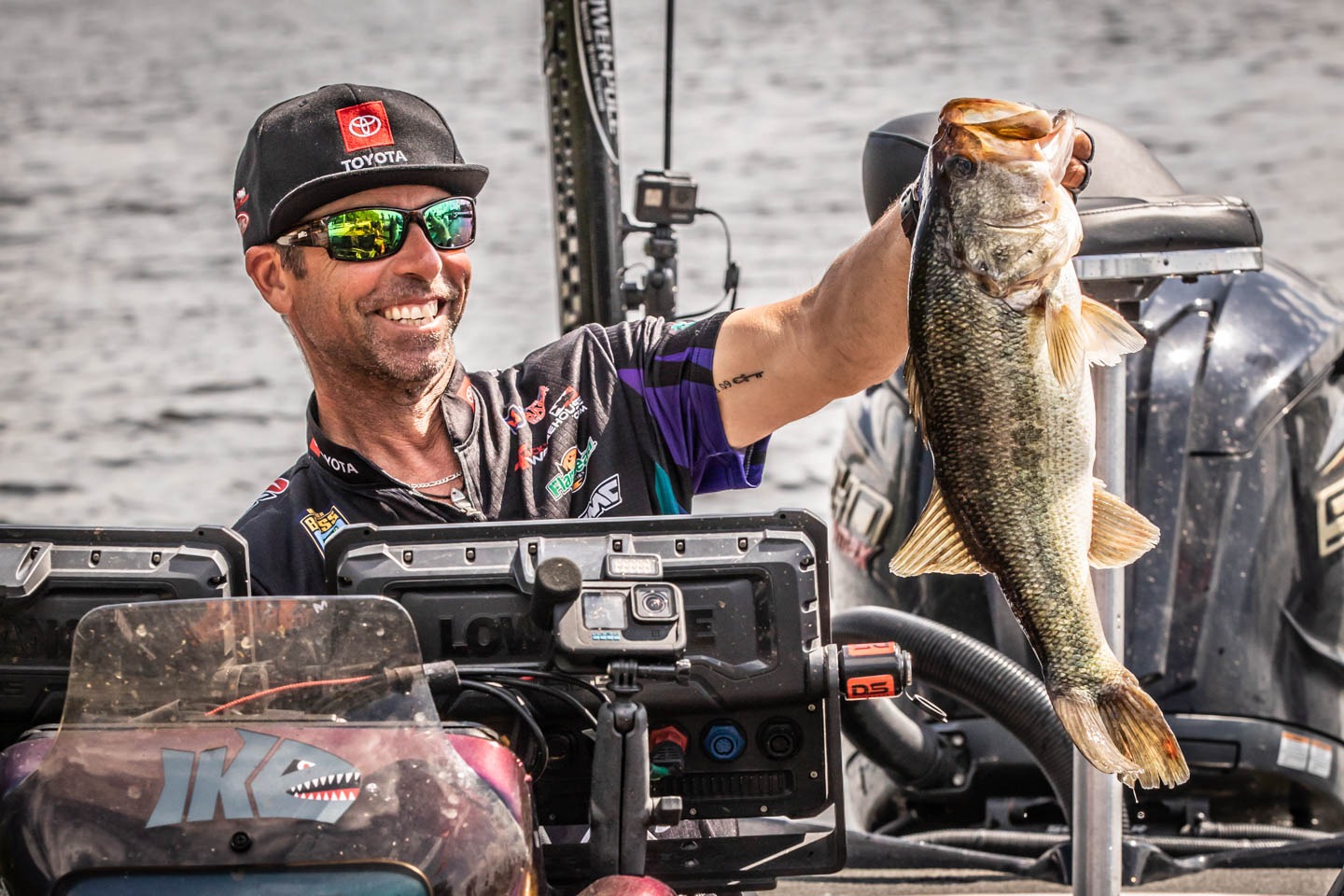
I notched a top 20 finish at the recent Lake Murray Elite Series tournament by casting to schooling bass that were feeding on blueback herring. I caught 13 of the 15 bass I weighed in from one big school holding on a long, tapering, hard-bottom point.
When they ravaged bluebacks on the surface before sunrise, they were the easiest fish in the world to catch. I think you could throw a water bottle out there with a hook on it and catch some of them. I picked them off with a chrome Berkley Cane Walker pencil popper.
This dream action only lasted an hour or so. Many anglers would have left after this. Or, they might have hung around for another hour or two waiting for the bass to come up again. You can’t count on that.
I was able to continue catching bass until 10 or 11 o’clock by reigniting the school. That allowed me to catch a few more of them before they shut down again. I used a variety of tricks to stir them up as the morning progressed.
Whenever I fish for schooling bass, I have baits on my deck for surface-feeding activity, for bass feeding in the mid-depths and for bottom presentations. I’ve already mentioned the Cane Walker for topwater action. Berkley’s Drift Walker is another good one.
For the mid-depths, I like a fluke style bait and a scrounger head dressed with a Berkley Powerbait Maxscent Flatnose Minnow or Powerbait Jerk Shad. When the bass stop feeding on top, these baits can keep them biting even when they’re not blowing bait out of the water.
The bass become finicky when the sun gets up. This is when I keep them going by working a shaky head or a drop shot over the bottom.
Color and action
I start with lures in colors that resemble blueback herring, such as chrome, translucent and baits with a brownish green back. But the bass eventually don’t respond to the same colors. That’s when I change colors to trigger the fish. With the fluke bait I reignited the bass at Murray by switching to bright pearl chartreuse.
When I’m fishing subsurface lures, most of them mimic the action of the blueback herring. This baitfish swims in a very straight line with little side-to-side movement. Having said that, I will occasionally cast a bait that has a radically different action. I caught some of my bass at Murray on a Molix spinnerbait. It doesn’t look like a blueback, but it has a totally different action.
Sound
I cannot overstress the important of sound. It was crucial at Murray. When the bass first stopped schooling on the surface, I fished the mid-depths with lures that have very little sound to them. I caught some of my bass on a Berkley Frittside crankbait. I used the model that doesn’t have any rattles. It’s a great blueback imitation.
There were times when the bass stopped hitting the Frittside for 20 minutes. I’d start wondering if the school was still there. Then I’d throw a noisy Berkley War Pig lipless rattling bait at them and trigger more bites.
I’ve had a Hydrowave on my boat for the past 15 years. T-H Marine, the company that markets the Hydrowave, does not sponsor me. But I can tell you 100% it works on schooling bass.
When I showed up on my spot at Murray first thing in the morning, I’d have the Hydrowave set on pulse. When the school shut down, I’d press play and turn up the volume on the feeding baitfish sound. I can’t tell you how many times, within five to 10 seconds, the bass would start firing. I’ve seen that happen dozens of times over the years. If I hadn’t seen it I would never believe it.
Boat ploys
My final two tricks involved using my boat to stir things up. After I’d been fishing the school for two or three hours and cycled through all my other gambits, I’d Power-Pole up. Then I’d zigzag around the school of bass with my trolling motor on high. That got the bluebacks moving, and that would reignite the bass.
Before leaving the bass, I put on my life vest and started the outboard. I always do this last because it’s a 50/50 deal. It either works like a charm or it messes everything up.
With a topwater or some other bait ready to cast, I did donuts around the bass with the boat almost on pad. That pushed big waves at the bass and the baitfish. This gave me another bass or two before I left.
If I had just sat there and waited for the bass to begin feeding on their own, I wouldn’t have caught nearly as many fish. You have to reignite them to make the most of this situation.





